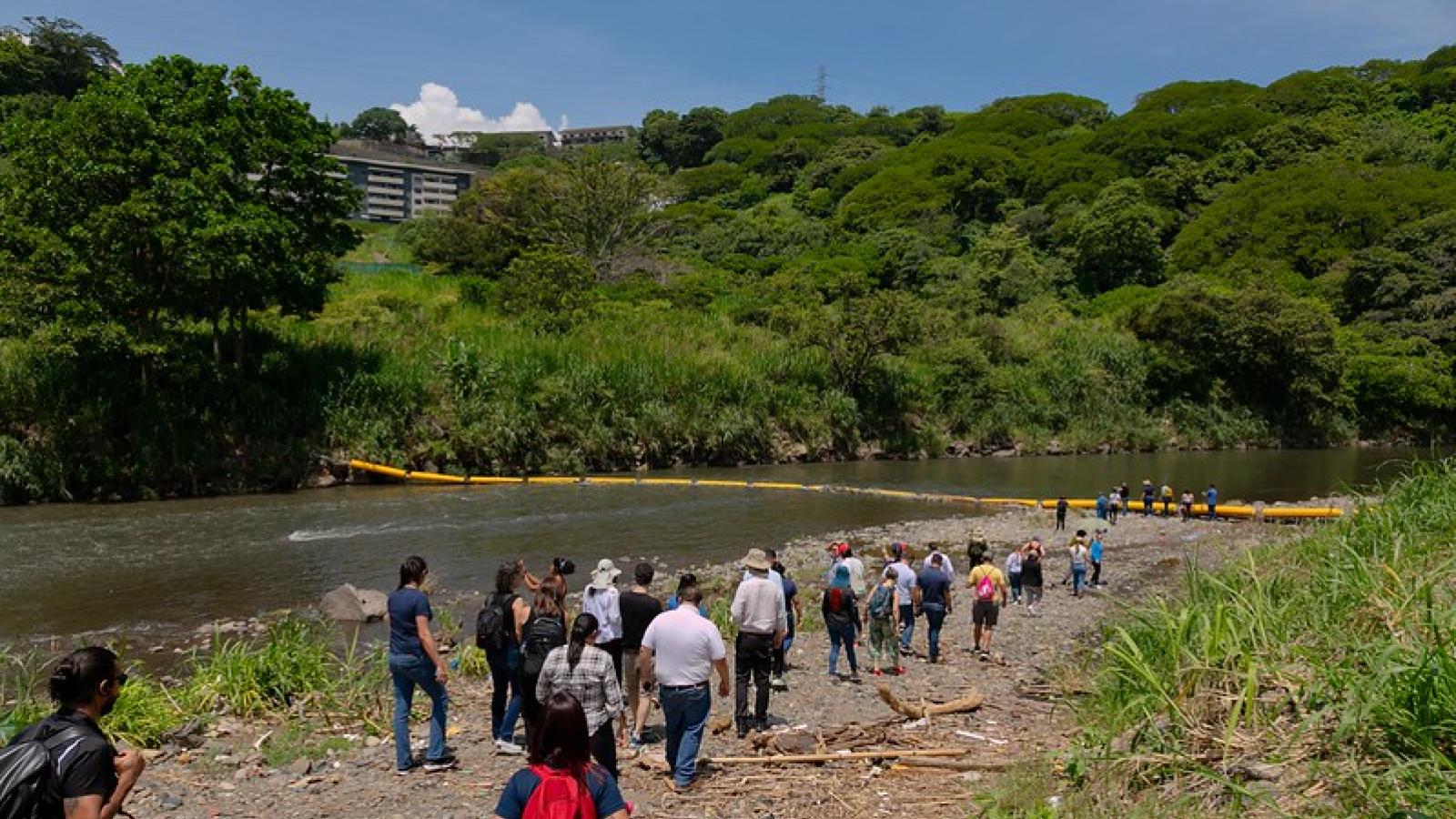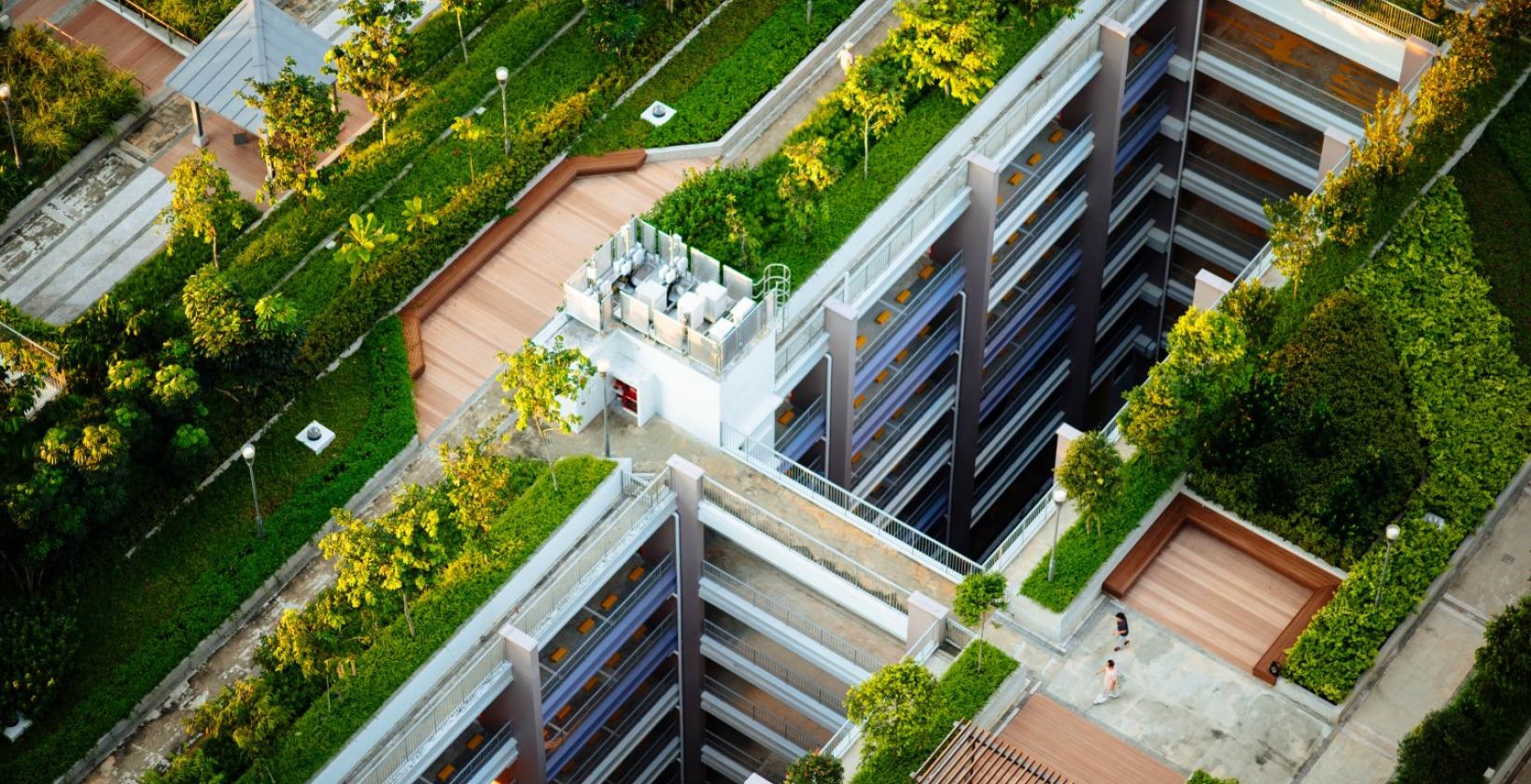In Costa Rica, A Scalable Pilot is Trapping and Repurposing Plastic Waste Before it Reaches the Ocean
An innovative partnership is advancing a simple and effective solution to clearing plastic waste from waterways and turning it into a key element of a circular economy.
Participants in the Costa Rica City Academy walk down the banks of the Virilla River to see the waste-trapping barrier (Image: Roberto Carlos Sanchez Photo).
The bright yellow barrier, 78 meters long, stretches across the length of the Virilla River in the Greater Metropolitan Area (GAM) of Costa Rica. It’s early July, the height of the rainy season, but the last few days have been abnormally dry—one of the many emerging effects of climate change in the region. The river is calm and sits around four meters below its typical height, so Ana Yancy Arce, Manager of Sustainability and Communication for Corporation Pedregal, a construction and manufacturing company based in Heredia, Costa Rica, was able to lead the group participating in the UrbanShift City Academy on Integrated Climate Action Planning and Nature-Based Solutions in San José right up to its banks to explain the significance of the barrier across the river.
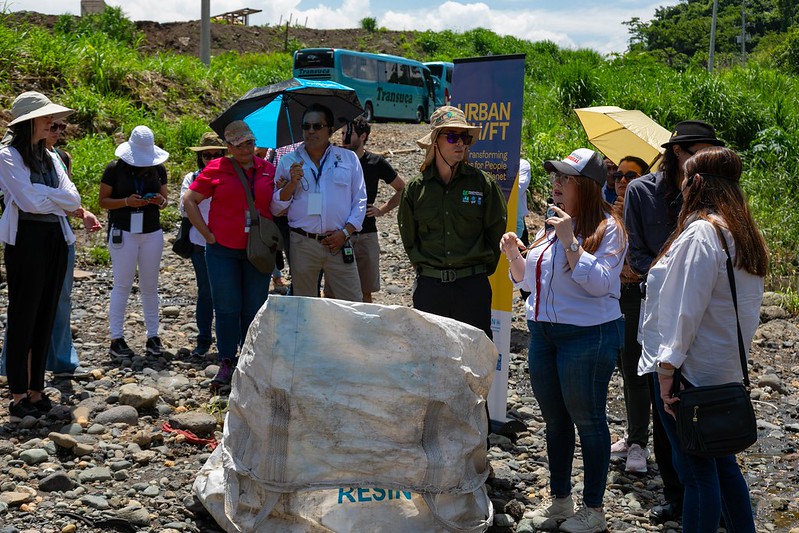
The barrier is simple yet effective: it’s designed to trap and recover waste and plastic pollution before it flows down the river and into the ocean. A fence of galvanized steel mesh hangs below the floating barrier and oscillates with the height of the river, ensuring that minimal waste slips through. Every two days, staff from Pedregal come out with a mechanical rake and pull in the waste that’s piled up against the barrier and along the riverbanks. Having only been in place for two months, the barrier has already trapped nearly 1 ton of plastic waste. By 2030, Yancy said, the goal is to recover 200,000 tons of waste nationwide—both through this barrier and three others proposed for rivers in Costa Rica—and stop 80% of waste that originates in the GAM from ending up in the ocean. “I am obsessed with plastic not reaching the ocean,” Yancy said. Because the Virilla River is the most polluted river in the GAM, it is an ideal location to pilot this technology—and prove that it can effectively scale to more waterways across Costa Rica. An inspiring goal, considering the UN-dubbed planetary crisis of plastic pollution: plastic waste is ubiquitous, in the air, the soil, freshwater, and in the oceans, causing serious human health impacts, choking wildlife, damaging soil, and poisoning water. Cities are able to lead on many of the solutions, including consistent collection services, safe and environmentally sound disposal practices, and robust regulatory enforcement to enable the success of various national-level interventions and international cooperation agreements.
This first-of-its kind intervention in Costa Rica symbolizes the country’s commitment to removing plastic from its landscape, which is renowned for strong environmental and conservation protections. A range of partners came together to implement this project: The United Nations Development Programme’s Plastic-Free Landscape Project is supporting the effort, along with Televisora de Costa Rica, the CRDC-PEDREGAL Consortium, OneSea Foundation, Delfino, the Organization for Tropical Studies, and the Global Environment Facility-supported Transition to a Green Urban Economy (TEVU) project. During the launch of the UNDP Plastic-Free Landscape Project, UNDP resident representative in Costa Rica, José Vicente Troya, said his vision is for Costa Rica to be a leader in the fight against plastic pollution. “We have formidable allies, and we want to organize a national campaign in which no one is left behind by participating in a historical solution that can inspire the rest of the world,” he said.
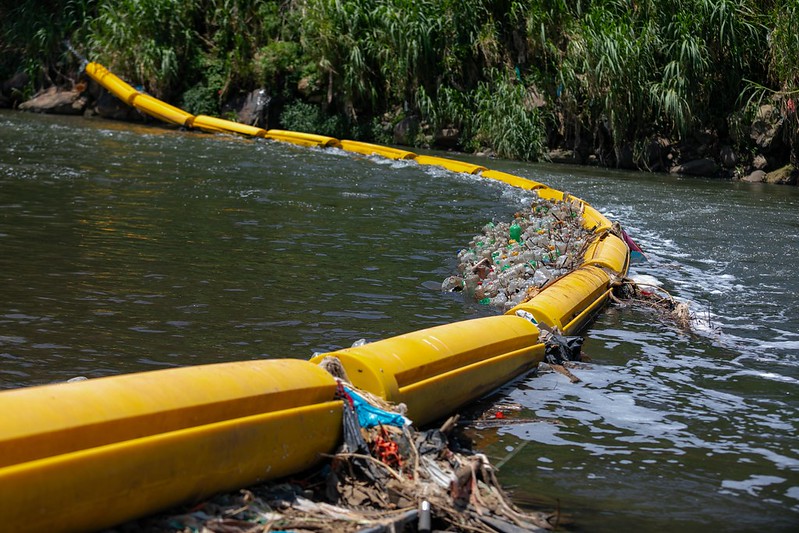
Under the late morning sun, Yancy gestured to the Corporation Pedregal facilities visible up the banks of the river. The barrier, she said, is just one step in the partnership’s vision for ending plastic waste in Costa Rica. The other crucial element is pioneering a circular economy effort to transform plastic waste into useful materials, and reduce the burden on the country’s landfills. On the Corporation Pedregal property is a facility that transforms non-valuable plastic into a synthetic sand material that can be incorporated into building materials, like bricks. “The problem with non-valuable plastics has been that no one would buy them,” Yancy said, “and now we’re giving them value.” Pedregal has been hosting tours with construction companies to show them the value of the blocks, which sell for a comparable price to standard materials, and encourage participation in the circular economy. If a house was built entirely out of blocks formed with their synthetic sand, Yancy said, “it would be as if we injected 4 million plastic bottles into a house.”
While anyone in Costa Rica can bring their non-valuable plastic to Pedregal for processing, the barrier is providing a new stream of material. The Pedregal team is careful to sort through all the plastic trapped by the barrier, dividing it into non-valuable plastics, which can be processed into synthetic sand for building materials, and recyclable plastics. To Yancy, this represents an opportunity to strengthen education and involvement around plastic waste, especially for Costa Rica’s youth. She’s hopeful that as awareness around the need to prevent plastic pollution rises, they will see fewer recyclable plastics trapped in the barrier.
As both the efforts to trap and repurpose plastic waste scale up in Costa Rica, Yancy is excited to show that the country can be a model for others grappling with similar issues around plastic pollution. “This is a test,” she said. “We want to show this can be replicated anywhere else.” As the initiative progresses, the partners will be developing methods to quantify the benefits—from the amount of plastic diverted from the ocean, to the associated reduction in CO2 outputs from local landfills. It’s a simple solution, but one with enormous implications for the wellbeing of Costa Rica’s landscapes and people.
To learn more about the recent City Academy in San José, Costa Rica, please visit the event page.
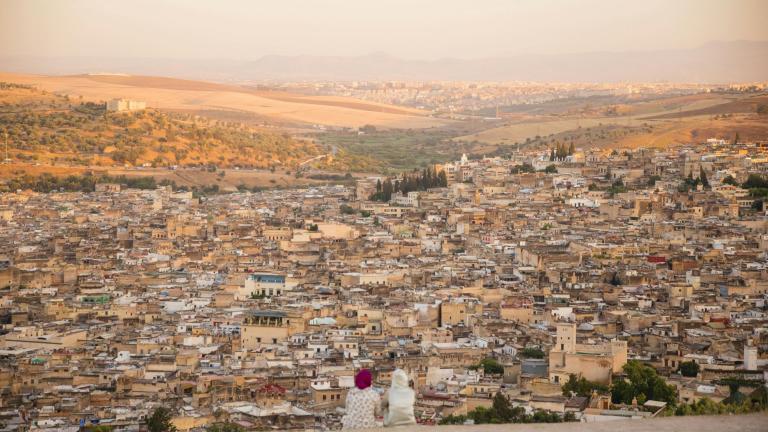
Local Leadership Paves the Way for Sustainable Change in Morocco
How can Morocco transform its resources, waste, and energy into engines of resilient growth?
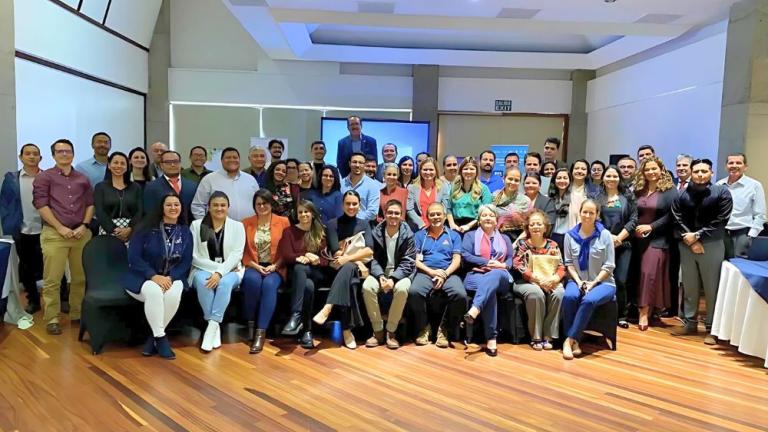
How Costa Rica is Pioneering a Green Future Through Sustainable Development
The first National Dialogue for Costa Rica addressed challenges from waste management to urban flooding as part of the UrbanShift program.
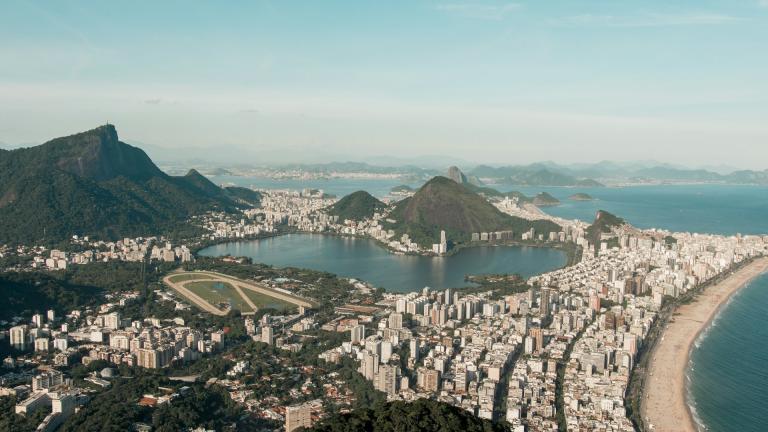
UrbanShift at COP30
UrbanShift will be participating in a range of events during the Local Leaders Forum in Rio and COP30 in Belém. Learn more here.
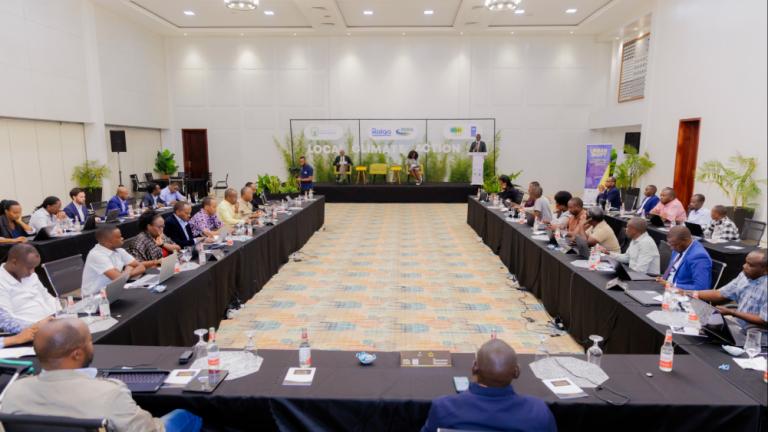
UrbanShift Looks Back: On the Importance of Facilitating Multi-Level Collaboration
Over the course of the UrbanShift program, ICLEI has led on National-Local Dialogues and other efforts to support enhanced collaboration across levels of government to create more aligned, actionable climate strategies.
